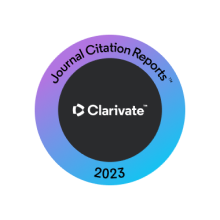Abstract
Objectives. It has been shown that blood concentrations of NT-proBNP may be useful in identifying preterm infants at risk of hemodynamically significant patent ductus arteriosus and its complications. The aim of the study was to assess predictive value of serum NT-proBNP levels for early ductus arteriosus (DA) closure in very preterm newborns.
Methods. Fifty-two infants weeks’ gestation aged (PDA) diameter >1.5 mm were involved in a randomized study. Twenty-seven (52%) of them were treated with ibuprofen or paracetamol starting within the first 3 days of life. Expectant management was applied to 25 (48%) infants. All patients underwent planned echocardiographic (daily) and two serum NT-proBNP measurements within the first 10 days after birth. Depending on the DA closure within the first 10 days of life, 2 groups of patients were formed retrospectively, with closed (n = 30) or patent (n = 22) DA by this age.
Results. In the first 10 days of life, DA closure occurred in 19 (70%) treated infants and in 11 (44%) infants managed expectantly (p>0,05). Initial concentrations of NT-proBNP were significantly higher in infants that had patent ductus arteriosus (PDA) at 10 days of life . By the eighth day, median NT-proBNP values in both groups significantly decreased but remained considerably higher in newborns with PDA. NT-proBNP serum concentrations on the second day of life could reliably predict DA closure within the first 10 days after birth in treated babies (the AUC was significant 0.81 [95% CI: 0.58–1.03], pConclusions. Serum NT-proBNP concentrations on the second day of life could reliably predict early PDA closure in treated but not in expectantly managed very preterm infants.
Recommended Citation
Potsiurko, Solomiia; Dobryanskyy, Dmytro; and Sekretar, Lesya
(2020)
"Predictive value of blood N-terminal pro-brain natriuretic peptide concentrations for early patent ductus closure in very preterm infants,"
Journal of the Saudi Heart Association: Vol. 32
:
Iss.
4
, Article 12.
Available at: https://doi.org/10.37616/2212-5043.1230
Creative Commons License

This work is licensed under a Creative Commons Attribution-Noncommercial-No Derivative Works 4.0 License.




